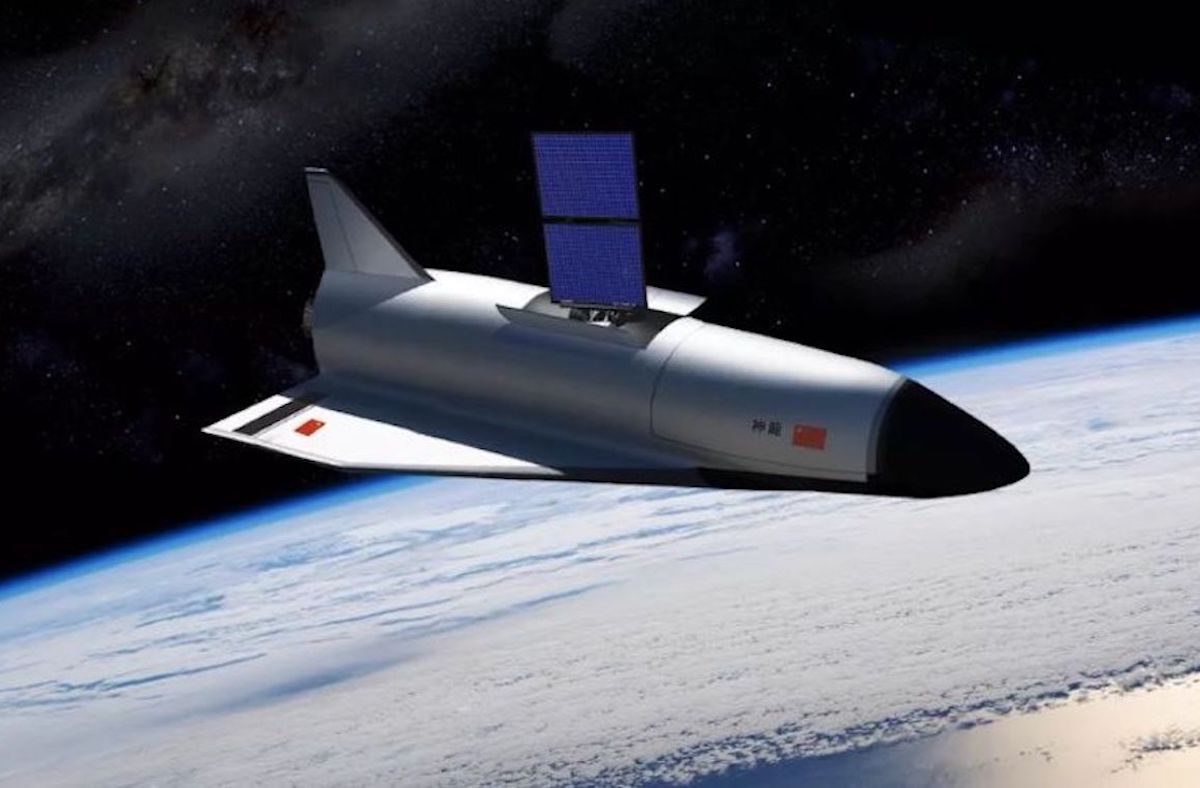Global Courant 2023-05-11 11:35:19
China’s secretive miniature spaceplane, a unique asset that could play a key role in supporting future military operations in space, has reportedly passed a major test hurdle, according to state media and other reports.
This month, The Warzone reported that China’s mini spaceplane landed on an unspecified runway in the Gobi Desert after 276 days in orbit after being launched on August 4, 2022.
The report lists several possible landing sites for the spaceplane, possibly near the Lop Nur nuclear test site, which has historically been used for spaceplane recovery, or the Dingxin Test and Training Base, which regularly hosts large-scale People’s Liberation Army-Air operations. . Force (PLA-AF) exercises.
The Warzone report notes that China did not provide details about the design of the spaceplane or the specific technologies it had on board. It also did not yield any photos of the aircraft.
Still, China’s state media presented the event as an important milestone in the country’s space program. According to state media reports, the spaceplane’s journey was much shorter than that of the comparable American X-37B, which spent a record 908 days in orbit.
In a separate article this month, The Warzone reported that LeoLabs, a private space services company, claims its data shows China’s mini spaceplane docked with or captured a separate smaller object multiple times during its 276-day space mission.
Since launching in August 2022, China’s mini spaceplane has performed multiple major maneuvers to raise its altitude, demonstrated formation flying and self-propelled in what seemed like two or three docking or capture missions.
The Warzone notes that while it’s unclear what the Chinese mini spaceplane was doing if LeoLab’s data is correct, it shows that the Chinese mini spaceplane has significant maneuvering capabilities.
In an August 2022 article for The Debriefnotes Tim McMillan that while China’s mini spaceplane program is shrouded in secrecy, it bears striking physical similarities to the US’s X-37B clandestine spacecraft.
McMillan notes that China’s spaceplane program borrows from American designs, such as the Space Shuttle, X-37B and SpaceX rockets, rather than creating innovative new designs. He also notes that the extreme secrecy surrounding both the Chinese and US spaceplane programs makes it difficult to determine their intended missions and capabilities.
Kyle Mizokami speculates in a July 2021 article for Popular Mechanics that since the PLA has similar mission requirements to the US Air Force, the PLA could use the Chinese spaceplane to launch satellites into orbit, conduct reconnaissance missions, and perform other tasks.
X-37B orbital test vehicle after successful mission. Photo: Staffgt. Adam Shanks/DefenseScoop/Twitter
Mizokami notes that the American X-37B was built to spend months in orbit carrying out covert missions for the US military. He says it uses atmospheric physics for self-defense and evading enemies. The cargo hold is the main advantage that allows them to launch and recover payloads and then land them on any suitable airstrip in their path.
However, a 2019 paper from the Union of Concerned Scientists points out that the US X-37B is a poor platform for possible missions and as a space weapon.
The article notes several design flaws of the X-37B that make it too large and unmanageable to be a spy platform, while not being cost-efficient enough to retrieve space equipment. It also says it has too small a payload to launch multiple satellites and lacks the technology to meet and dock with other satellites.
The paper says the X-37B is also impractical as a space weapon, as it lacks maneuverability and is unable to communicate with other satellites. It notes that space-based weapons intended to engage ground targets are more expensive, less secure, and more unreliable compared to ground-based systems.
China’s mini spaceplane may have design features that remedy the shortcomings of the US X-37B, taking advantage of the “latecomer advantage” that improves and builds on existing designs rather than developing new designs from the bottom up and undergoing a costly and time-consuming trial undergo-and-error testing process.
In a November 2021 report from the China Aerospace Studies InstituteDaniel Shats and Peter Wood note that China’s spaceplane program, along with recent developments, has several military and civilian implications.
Shats and Wood note that China’s spaceplane program shows that it wants to compete with the US and other countries in the emerging space tourism sector, reduce the costs of launching satellites and other space-based assets, and use spaceplanes to launch satellites. and as an anti-satellite weapon.
In addition to developing spacecraft technology, China is also developing new generation space launch technologies. Mark Stokes and other writers comment in a March 2020 report for Project 2049 that China plans to produce a reusable two-stage launch vehicle to orbit by 2030. cycle engines.
These developments have raised concerns in US security circles. Mandy Mayfield notes in a February 2021 article for National Defense Magazine that U.S. defense officials have expressed concern about the vulnerability of U.S. space assets to China’s anti-satellite weapons, noting that China has moved its space and counterspace weapons into the new PLA Strategic Support Force (PLA-SSF), which focuses on electronic and cyber warfare capabilities.
Mayfield also mentions that while China works to match or exceed the space capabilities of the US, counterspace operations will feature prominently in future PLA campaigns.
These projects align with China’s larger space strategy. Namrata Goswami notes in a 2018 article for Strategic Studies Quarterly that China wants to occupy strategically important locations such as the moon to secure energy and strategic resources, enhance its national prestige and international stature, legitimize the Chinese Communist Party’s power grab, and conduct research that positions China as a world leader in the field of space technology.
Similar:
Loading…




